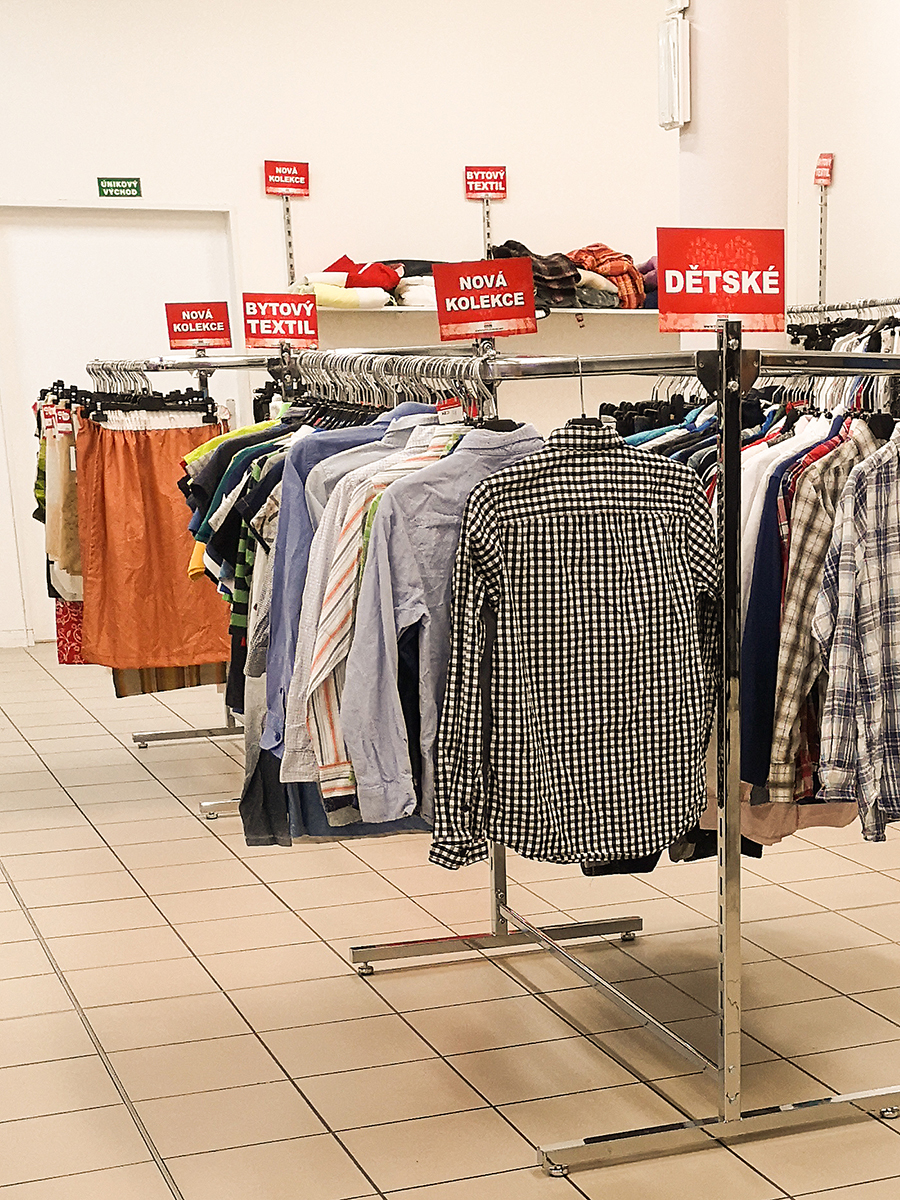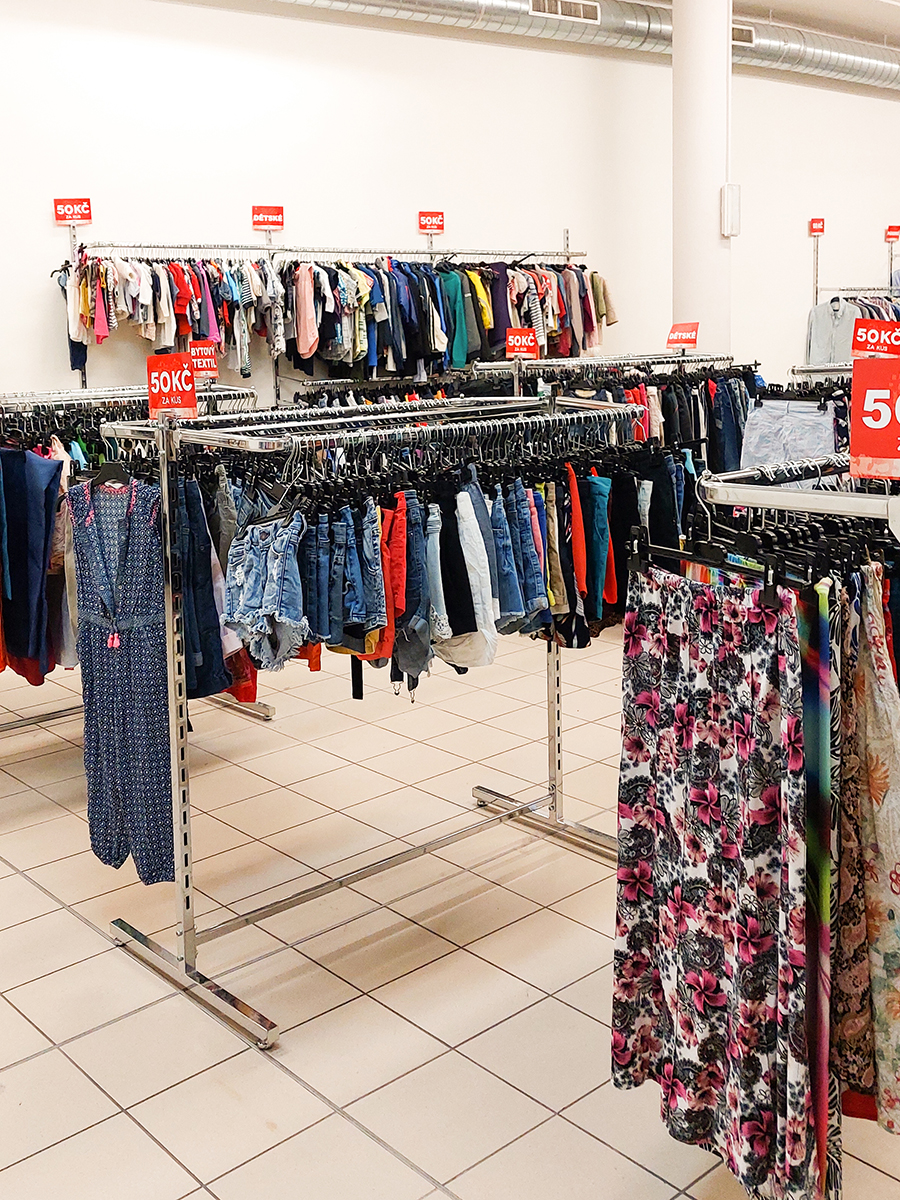
Most people know what is hiding behind the clothes hanging in our closets. They know that they are pieces that are produced in developing countries, where people are working hard in poor conditions for little money. But that’s more or less everything. Normally, you will not find more details on this topic in television or newspapers – and the reason is quite simple. Nobody talks about it, because if more light fell on this problem, the comfort we are used to would suffer the most.
But fast fashion – and especially why you should not support it greatly, is something we have to talk about.

On the twenty-fourth of April 2013, the building Rana Plaza in Dhaka, Bangladesh, fell down. In this tragedy, 1 134 people died and approximately 2 500 others were injured. The colaps of the building was not accidental, unexpected, not the cause of an earthquake or other natural disaster. The building was in terrible condition, workers repeatedly reminded their superiors of cracks in the building, but these concerns were ignored. The eight-storey building, built on a filled-in pond, originally intended for only commercial purposes and with permit for only five floors, had collapsed. At that time, there were 3 122 employees inside. It took two weeks to get all bodies out. And those who survived were immediately forced to go back to work the next day.
But this whole incident was quickly forgotten. Even in 2013, 180 fashion brands signed an accord under which they are committed to providing workers with a safe working environment. However, the conditions in which these people are forced to work, are horrible.

In Cambodia, children can work when they are 15 years old, but factories employ girls that are only twelve. And just because their families live in such poverty, that it is much more efficient for them to work as soon as they are allowed instead of going to school. Therefore, the fashion industry employs up to 168 million children around the world.
The average daily working time is fourteen to sixteen hours. Seven days a week. During the season’s peak, they work until three in the morning because they are pushing by a deadline, and when they offer them overtime, they can not refuse, because they already get paid poorly.
They work in buildings that do not have proper ventilation – and therefore they breathe toxic fumes all day, they sit behind one table, facing verbal and physical abuse; and if they do not do their job as their superior wishes or they do not fast enough, they are not allowed to drink, eat or have a break. But because of different contracts, they are still committed to working in these factories – and nobody cares that they have problems with their spine, eyes, and are under constant stress. That is why they are forced to leave work when they are forty years old because they simply do not manage it and their health is definitely ruined.

The people working in these factories earn about three dollars a day – some have it worse and they get even less. However, this “minimum wage” is by a half or by 80 percent less than how much people need to survive. But since they have no choice, they do everything to keep their position, and at least in this way they are trying to financially secure their families.
And while these people live in disastrous conditions, the owners of the companies for which people work in factories, are millionaires and billionaires – Amancio Ortega, the founder and owner of ZARA, is the sixth richest person in the world.
But problem is even in the cost of clothing itself. There are more people involved in making one T-shirt – from farmers in cotton fields, through workers in factories and truck drivers to shop staff, plus – of course – their supervisors; and all of them must get paid. And when we pay five euros for one shirt, it’s not hard to imagine how the money has to be distributed.

Clothing stores are getting bigger and bigger. Every week is a new collection. Every two or three days new clothes come in huge trucks. And all of this is just because they want us to buy more. They want us to see what is new and what is “trendy right now“, so we then feel like we have nothing cool to wear.
Even the clothing itself is purposely low-quality. Our parents have been wearing a pair of pants for twenty years and they still look the same – but today we use worse materials because the goal is not just to make a lot for cheap, but to make things so that after a short time they lose their colour and shape, and the customers can throw it out. On average, one piece of clothing is worn only seven times.
This fast-fashion cycle never ends. After two washes, we throw away a shirt because it doesn’t look like we bought it – and we go to the shop where sales are “screaming” at us and the racks are filled with hangers, and after a few minutes we stand by the cashiers, where we leave a hundred euros. Employees see that people buy clothes, so they expand and open new stores to make people buy even more. E-shops are being launched so that we can shop at one in the morning from the comfort of our home. Clothing retail owners give us more and more, and we never have enough.

I don’t tell you to stop buying clothes at all. But think about how much you really need. If you come home with a new piece of clothing every single week, and before every season you leave tens to hundreds of euros in the clothing stores, you only support the world’s second dirtiest industry. Only the leather factories in Kampur in India pour 50 million liters of toxic waste into the Ganga River every day. Every piece of clothing contains dangerous chemicals that cause not only skin problems but also asthma, blindness, leukemia, infertility, failure of kidneys and immune system, or cancer.
People in Bangladesh or Myanmar need this job. But they deserve better working conditions, shorter working hours and higher wages. Their children deserve to go to school. They deserve to spend time with their family. They deserve a better life.
Buy clothes – but buy responsibly.
And watch the film The True Cost. It is only an hour and a half long, but it will change your view of the whole problem of fast fashion.

Väčšina ľudí vie, čo asi sa skrýva za oblečením, čo nám visí v skrini. Vie, že sú to kúsky, ktoré sú vyrábané v rozvojových krajinách, kde ľudia ťažko pracujú v zlých podmienkach za nízku odmenu. Ale to je viac-menej všetko. Bežne v televízii alebo novinách nenarazíte na bližší rozbor tejto témy – a dôvod je celkom jednoduchý. Nikto o tom nehovorí, pretože ak by na tento problém padlo viac svetla, najviac by na tom utrpel komfort, na ktorý sme zvyknutí.
No rýchla móda – a hlavne to, prečo by ste ju vo veľkom nemali podporovať, je niečo, o čom sa musí hovoriť.

Dvadsiateho štvrtého apríla 2013 spadla budova Rana Plaza v Dhake v Bangladéši. Pri tejto tragédii umrelo 1134 ľudí a približne 2500 ďalších bolo zranených. Pád budovy nebol náhodný, neočakávaný, nebol príčinou zemetrasenia alebo inej prírodnej katastrofy. Budova bola v hrôzostrašnom stave, pracovníci opakovane upozorňovali svojich nadriadených na pukliny a praskliny na stavbe, no tieto znepokojenia boli ignorované. Osemposchodová budova, ktorá bola postavená na vodnatej pôde, pôvodne určená len na komerčné účely, a mala povolenie na stavbu iba piatich poschodí, sa zrútila. V tom čase sa dnu nachádzalo 3122 zamestnancov. Dva týždne vyslobodzovali z trosiek telá. A tí, ktorí prežili, boli hneď na nasledujúci deň nútení ísť späť do práce.
No na celý tento incident sa rýchlo zabudlo. Ešte v roku 2013 podpísalo 180 módnych značiek dohodu, podľa ktorej sa zaväzujú zabezpečiť pracovníkom bezpečné pracovné prostredie. Avšak podmienky, v ktorých sú títo ľudia nútení pracovať, sú na plač.

V Kambodži môžu deti pracovať už ako pätnásťročné, no továrne zamestnávajú aj dievčatá, ktoré majú len dvanásť. A to len preto, lebo ich rodiny žijú v takej chudobe, že je pre nich oveľa výhodnejšie, aby deti pracovali tak skoro, ako im to dovolia, namiesto toho, aby chodili do školy. Preto módny priemysel zamestnáva až 168 miliónov detí po celom svete.
Priemerný denný pracovný čas je štrnásť až šestnásť hodín. Sedem dní v týždni. Počas sezóny pracujú až do tretej ráno, pretože ich tlačí deadline, a keď im ponúknu nadčasy, tak nemôžu odmietnuť, lebo už aj tak dostávajú zaplatené žalostne málo.
Pracujú v budovách, ktoré nemajú poriadnu ventiláciu – a preto celé dni dýchajú toxické výpary, sedia za jedným stolom, čelia verbálnemu a fyzickému násiliu; a ak nerobia svoju prácu tak, ako si ich nadriadení želajú, alebo nestíhajú, nemajú povolené napiť sa, najesť alebo mať prestávku. No rôznymi zmluvami sú zaviazaní naďalej pracovať v týchto továrňach – a nikoho nezaujíma, že majú problémy s chrbticou, očami a sú pod neustálym stresom. Práve preto sú už ako štyridsaťroční nútení opustiť prácu, pretože ju jednoducho nezvládajú a zdravie majú definitívne zničené.

Ľudia pracujúci v týchto fabrikách zarábajú okolo troch dolárov denne – niektorí sú na tom horšie a dostanú ešte menej. Táto “minimálna mzda” je však o polovicu alebo až o 80 percent nižšia, koľko potrebujú ľudia na prežitie. No keďže nemajú na výber, robia všetko preto, aby si svoju pozíciu udržali, a aspoň takto sa snažia finančne zabezpečiť svoje rodiny.
A zatiaľ čo títo ľudia žijú v katastrofálnych podmienkach, majitelia spoločností, pre ktoré ľudia vo fabrikách pracujú, sú milionári a miliardári – Amancio Ortega, ktorý je zakladateľom a vlastníkom ZARA, je šiestym najbohatším človekom na svete.
No problém je aj v samotnej cene oblečenia. Na výrobe jedného trička sa podieľa viac ľudí, než sa zdá – od poľnohospodárov na poliach s bavlnou, cez pracovníkov v továrňach a vodičov dodávok, až po zamestnancov v obchodoch, plus – samozrejme – ich nadriadení; a tí všetci musia dostať zaplatené. A keď dáme za jedno tričko päť eur, zrazu nie je také ťažké predstaviť si, ako sa musia rozdeliť tie peniaze.

Obchody s oblečením sú čoraz väčšie a väčšie. Každý týždeň je nová kolekcia. Každé dva či tri dni prichádza v obrovských dodávkach nový tovar. A to všetko len preto, aby sme toho kupovali viac. Aby sme videli, čo je nové a “čo sa teraz nosí“, a následne potom mali pocit, že doma máme iba handry, ktoré nie sú “in“.
Aj samotné oblečenie je schválne nekvalitné. Naši rodičia nosia jedny nohavice už dvadsať rokov a stále vyzerajú rovnako – no dnes sa používajú nekvalitnejšie materiály, pretože cieľom nie je len vyrobiť čo najviac za čo najmenej, ale vyrobiť veci tak, aby po krátkom čase stratili svoju farbu a tvar, a zákazníci ich mohli vyhodiť. Jeden kúsok oblečenia preto nosíme v priemere len sedemkrát.
Tento kolobeh rýchlej módy nikdy nekončí. Po dvoch praniach tričko vyhodíme, lebo už nie je také, ako keď sme si ho kúpili – a vojdeme do obchodu, kde na nás “kričia” zľavy a stojany sú preplnené vešiakmi, o pár minút už stojíme pred pokladňou, kde necháme sto eur. Zamestnanci vidia, že ľudia oblečenie kupujú, preto predajne rozširujú a otvárajú nové pobočky, aby ľudia kupovali ešte viac. Spúšťajú sa e-shopy, aby sme mohli nakupovať aj o jednej ráno z pohodlia domova. Majitelia obchodov nám dávajú viac a viac, a my nikdy nemáme dosť.

Ani náhodou nehovorím, že si máte prestať nakupovať oblečenie. No zvážte, koľko toho naozaj potrebujete. Ak prídete domov s novým kúskom oblečenia každý týždeň a pred každým ročným obdobím necháte v obchodoch desiatky až stovky eur, len podporujete priemysel, ktorý je druhý najšpinavší na svete. Len kožiarske fabriky v meste Kampur v Indii vylejú do rieky Ganga 50 miliónov litrov toxického odpadu každý deň. Každý kúsok oblečenia v sebe ukrýva nebezpečné chemikálie, ktoré môžu spôsobovať nielen kožné problémy, ale aj astmu, oslepenie, leukémiu, neplodnosť, zlyhanie obličiek a imunitného systému alebo rakovinu.
Ľudia v Bangladéši alebo Mjanmarsku potrebujú túto prácu. No zaslúžia si lepšie pracovné podmienky, kratší pracovný čas a vyššiu mzdu. Zaslúžia si, aby ich deti mohli chodiť do školy. Zaslúžia si tráviť čas s rodinou. Zaslúžia si lepší život.
Nakupujte – ale nakupujte zodpovedne.
A pozrite si film The True Cost. Má len hodinu a pol, no zmení váš pohľad na celý problém rýchlej módy.





